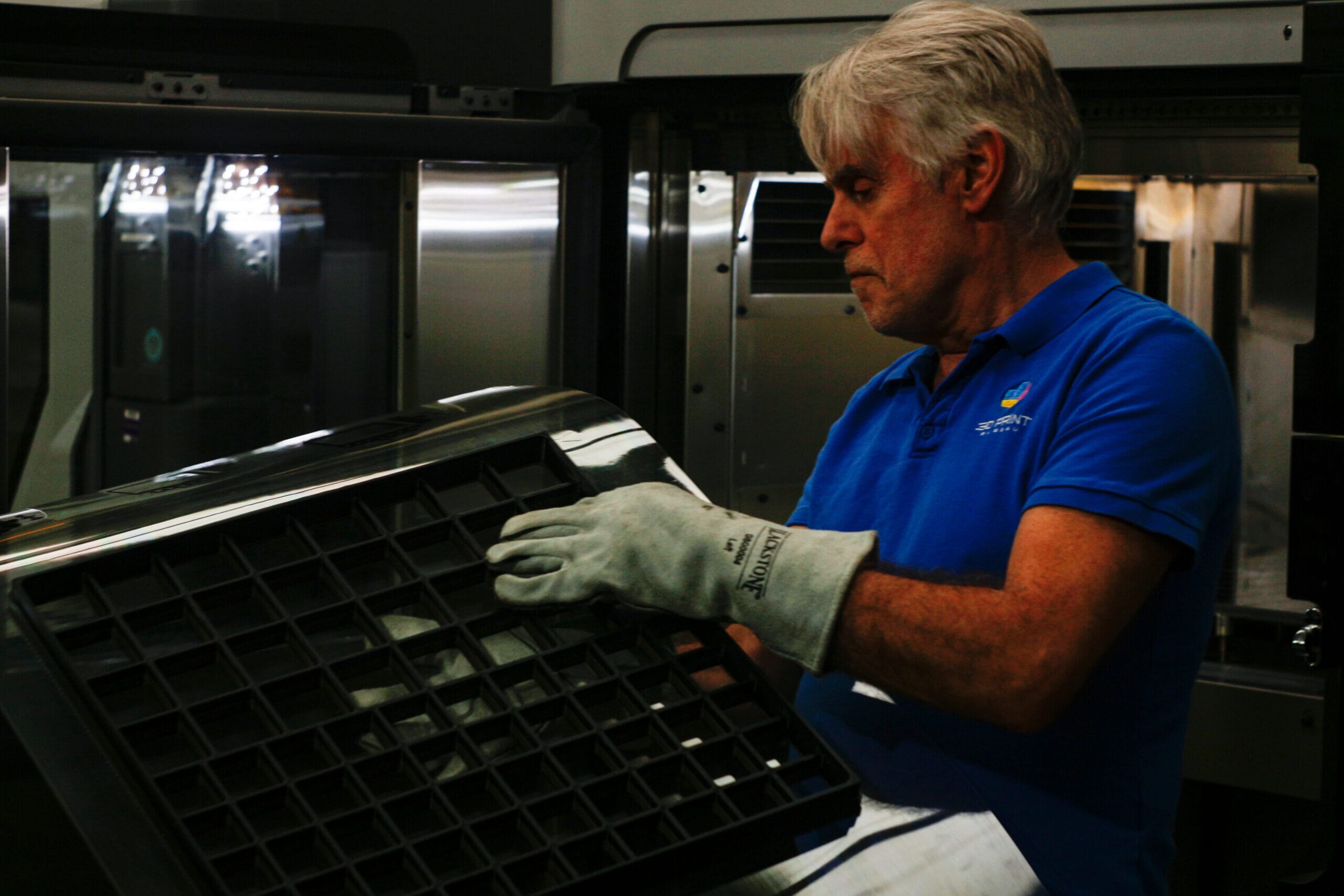Ensuring 3D Printing Quality Control

How quality control is ensured in 3D printed parts
In a 2025 webinar held by CIECA, AM expert Harold Sears shared a story about a 3D printed bumper reinforcement that failed and shattered during a crash. The insurer refused to pay out, blaming the uncertified part, which sparked a legal storm over who’s liable when 3D printed parts fail. Cases like this show exactly why 3D printing quality control is so essential.
At 3D Print Bureau, we are exceptionally thorough when it comes to quality control, and we consistently deliver high-precision parts that fulfil the requirements of the world’s most demanding industries. Here’s how we keep it all under control…
How we approach quality control in 3D printing
Prevent moisture contamination
Moisture contamination in FDM filament can seriously compromise print quality. Many commonly used filaments, such as Nylon, are hygroscopic, meaning they absorb moisture from the air. When that moisture is heating during extrusion, it turns into steam and causes a whole host of issues that can be tricky to spot until it’s too late.
What can go wrong:
- – Bubbling and popping – the steam can cause bubbles in the extruded filament, weakening the part’s structural integrity
- – Stinging and oozing – excess moisture can make the filament behave unpredictably, leading to messy prints
Weakened prints – poor layer adhesion can result in fragile and brittle parts.
How we prevent these issues:
- – We store filaments in airtight containers with desiccants, maintaining an environment between 18-24°C and under 50% humidity
- – We use a specialist vacuum oven to remove any residual moisture before printing
- – If a print looks rough or inconsistent, we’ll dry out the filament
Staying on top of moisture control allows us to protect the mechanical integrity and appearance of every FDM part we produce, ensuring that our customers receive print-perfect components time and again.
Calibrate our FDM printers to perfection
Our Stratasys printers are some of the best in the business, but they still need regular care. Calibration is key to maintaining dimensional accuracy and strong layer adhesion, making for a reliable FDM print every time.
We follow a strict routine that includes:
- – Z-stage zero calibration – makes sure that the nozzle is at the right distance from the build sheet
- – Tip offset calibration – aligns the model and support nozzles so they don’t interfere with each other while printing
- – X-Y axis calibration – adjusts the printer to keep all layers perfectly positioned
- – Auto and manual calibration – some of our Stratasys machines handle calibration automatically, whereas others require manual fine-tuning
Even the smallest misalignment can lead to inconsistent results, which is why we log every adjustment we make. By regularly calibrating our machines, we ensure that every print starts on the right foot.
Regularly maintain our PolyJet machines
Like any high-performance kit, our Stratasys PolyJet machines need regular maintenance to keep delivering flawless results.
Here’s how we do it:
- – We clean print heads before and after every print to prevent clogging
- – We use the built-in calibration and cleaning wizards to keep everything performing at its best
- – We store all PolyJet resins in a cool, dry place, out of direct sunlight to prevent premature curing
- – We regularly check and calibrate UV intensity to ensure that parts cure correctly
We also keep a close eye on warning signs, such as:
- – Material draughting – if not enough resin is being jetted, this can result in weak or distorted parts
- – Material dripping – excess resin could drip onto the build platform and leave unwanted residue
- – Yellowing of clear parts – we tackle this with regular UV calibration and post-processing to bleach the parts
Performing regular preventative maintenance is the best way for us to stay in control of quality and avoid costly downtime.
Take care of our Origin system
If the right conditions are met from the start, then our Stratasys Origin printers are capable of creating parts with exceptional levels of strength and detail.
We focus on a few key areas to keep every DLP print up to scratch:
- – We store resins correctly to avoid contamination or degradation
- – We regularly calibrate our Origin One and Origin Two printers to ensure each layer lands exactly where it should
- – After printing, we run dimensional checks and stress tests to confirm the part meets specifications
We also apply the same discipline to our SAF prints:
- – We store all powders in a dry, temperature-controlled environment to prevent contamination
- – We optimise cooling and cleaning procedures to enhance the surface finish
We do all this because we know that as long as we look after our machines, they will look after us.
Partner with us for prints you can depend on
Quality control shapes every decision we make at 3D Print Bureau; from how we store our materials to how we inspect the final part. Our customers come to us because they need parts that perform, and we don’t cut corners to get there.
Our top-of-the-range Stratasys printers are capable of producing everything from flight-ready aerospace brackets to precision medical guides, using only the highest-quality materials on the market. Our expert team is always on-hand to guide you through the process and technologies available, ensuring that the final product is tailored to your exact specifications.

